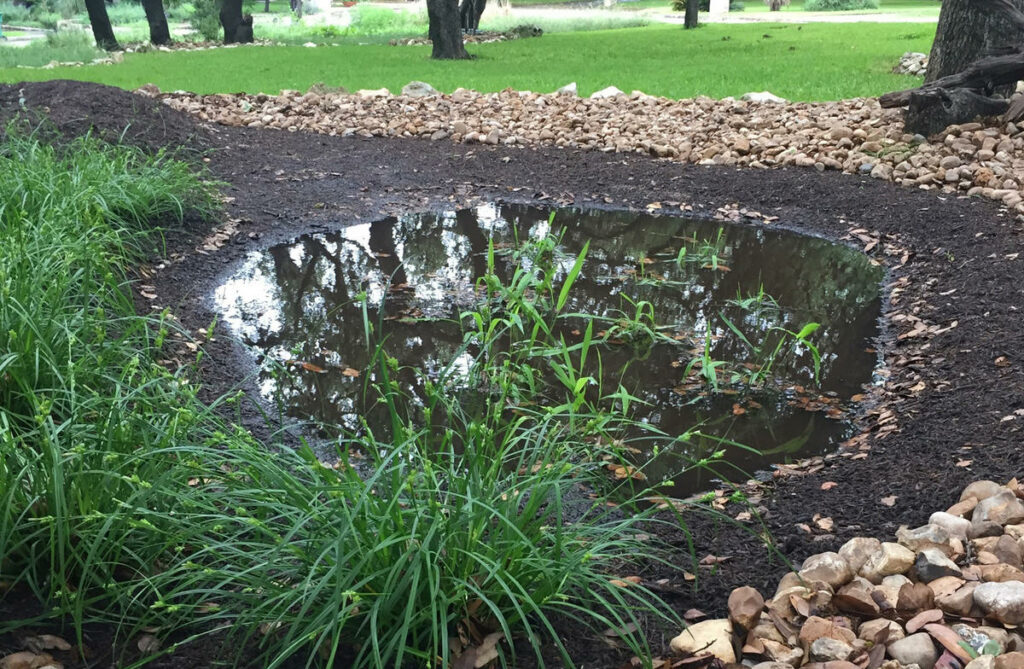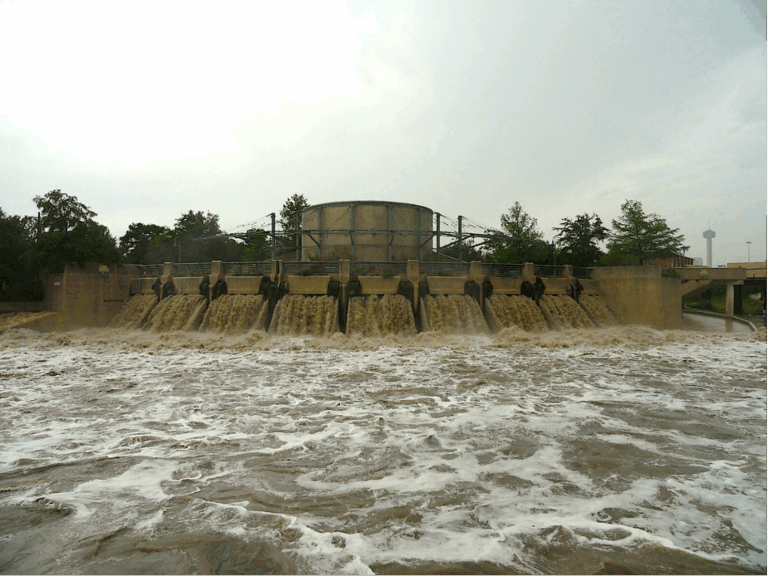Last Updated on October 12, 2023
A rain garden can help beautify your yard and help protect the environment. Think of the garden as a shallow bowl, about 6 to 9 inches deep, that captures rainwater from your roof, sidewalks and/or driveway. The rain garden allows you to slow down the flow of rainwater entering our waterways, to soak up some pollutants and filter the runoff that would otherwise end up in a storm drain, and ultimately in our creeks and rivers.
The best place to locate your rain garden is where the rainwater is already flowing or is concentrated, such as a downspout from roof gutters. A location in full sun is ideal because sunlight helps to remove some pollutants. Make sure your rain garden will be at least 10 feet from your home, backyard fence, or any other building. Avoid underground utility lines, a septic system, or tree roots you don’t want to damage when digging. Before you start digging your garden, you will want to do what’s called a percolation (“perc”) test to see how quickly water soaks into your soil.
Rain gardens may be used in the Edwards Aquifer Contributing Zone to treat rainwater for increased quality and to reduce flows off the property. However, rain gardens must either be lined with an impermeable liner or be part of a treatment train of BMPs if installed over the Recharge Zone.
What Pollutants Will The Garden Filter Out Of My Yard?
We all have household products that can become hazards to our waterways. Pollutants coming from your property could include bacteria from pets or wildlife, chemicals from roofing material, pesticides, fertilizers, and oils or grease among other materials. Rain gardens seek to treat pollutants on site, but allowing stormwater runoff to settle, infiltrate and potentially be absorbed. This results in a decrease of pollutants entering our creeks and rivers.
So How Do I Get Started?
Location. Location. Location is the key to a successful rain garden project.
Check out the rainfall during a storm. Where does it fall off the roof? Does your home have gutters and downspouts that direct roof runoff onto hard surfaces? If so, you can redirect the downspout to your lawn or landscaping; this may be the perfect spot for your rain garden!
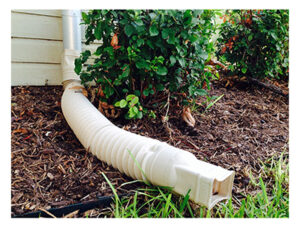
Perc Test
Why A Perc Test?
A perc test helps determine the ability of your soil to absorb the extra rainfall you will direct into your rain garden. Your rain garden should drain and have no standing water after 24 hours of a rain event. If your soil doesn’t soak up the rain water within 24 hours, it could create mosquito breeding habitat.
How Do I Do a Perc Test?
Call 811 before digging in order to have any buried utilities identified.
- When you know there are no buried utilities, dig a hole at least twelve inches deep.
- Fill it with water and let it drain.
- Fill it with water a second time while the soil is still saturated. If the water drains at least half an inch in an hour the second time you fill it, your soil has adequate drainage for a rain garden.
What If The Soil Drains Slowly? Should I Avoid A Rain Garden In My Yard?
If your soil does not drain adequately, you have some options to improve the drainage. You may be able to remove some of the existing soil and then mix in sand with the remaining soil in order to improve the drainage for a rain garden. In some locations it may also be possible to include an underdrain pipe at the bottom of the rain garden to drain excess water out of the rain garden once it’s filtered through the soil.
If you have a downspout that sends rain water down a driveway or other hard surface, you may be able to simply redirect the water onto a lawn or other landscaped area where it can receive some filtering without constructing a rain garden.
Rain Garden Blueprint
How Do I Determine The Size of The Garden?
The size of the rain garden depends on the size of your roof and the available space in your yard.
First, measure the length and width of the drainage area to the rain garden. Once you know the drainage area, multiply it by the depth of the amount of rain water runoff coming from your roof top from 1 ½ inches of rain. In the example below, you would measure the rooftop draining to the downspout to find the drainage area for the rain garden.
Rooftop Example:
- Calculate the Drainage Area:
- Entire rooftop drainage area: 60 ft (length) x 30 ft (width) = 1,800 sq ft
- A rain garden for ¼ of the rooftop will have a drainage area of 1,800 ÷ 4 = 450 sq ft
- Calculate the Rain Water Runoff Volume:
- The Rainfall Runoff is determined for 1.5 inches of Rainfall
- 1.5 inches of Rainfall is equal to 0.125 feet of Rainfall
- Calculation:
Drainage Area x Rainfall = Runoff Volume
450 sq ft x 0.125 ft = 56.25 cubic feet
- Calculate the Rain Garden Size:
- For a rain garden that is 6 inches (0.5 ft) deep, the runoff volume generated is divided by the depth of the rain garden:
- Runoff Volume ÷ Depth of Garden = Size/Area of Garden
- 56.25 cubic feet ÷ 0.5 feet = 112.5 square feet
- Remember, your rain garden can be shaped in any way you prefer, it’s not one size fits all. Take a look at our chart to determine what dimensions might work best in your yard.
- Use a garden hose to help lay out and outline the shape of your rain garden. Often shaped like a kidney bean, your rain garden dimensions for the 75 square feet needed in the example shown above could be 6 ft x 12.5 ft or 5 ft x 15 ft.
- Dig your rain garden to the calculated depth within the area you’ve outlined by the garden hose. Be sure to gently slope the sides of the garden. Remember that your garden should be a shallow bowl or basin.
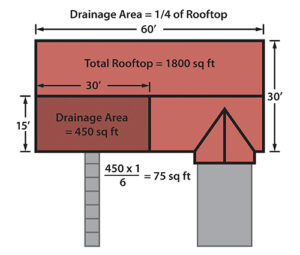
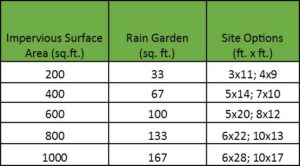
What If My Yard Is On A Steep Slope?
The bottom of the rain garden needs to be flat. If your yard has a steep slope, use the soil you dig out from one side of the garden to build up the other side creating a bowl shape that can hold the water until the soil absorbs it.

